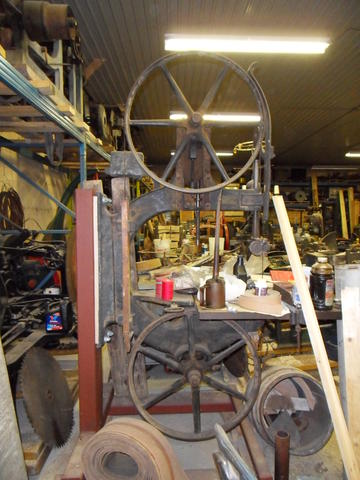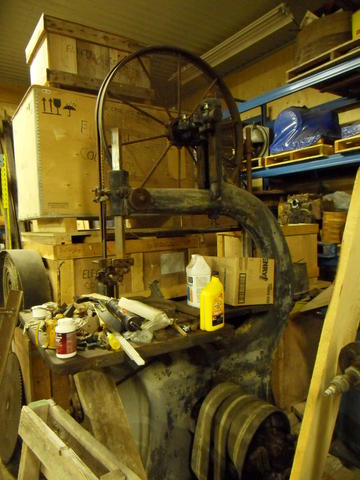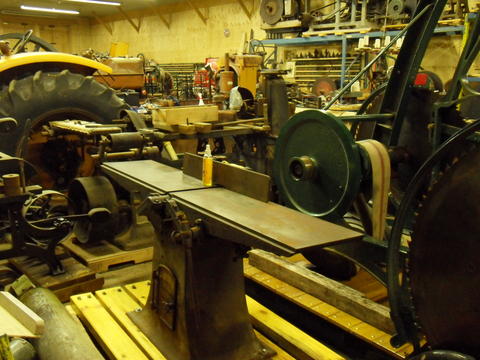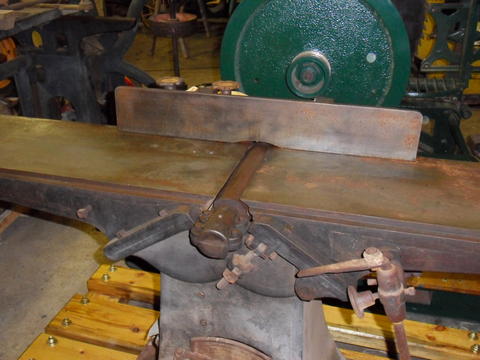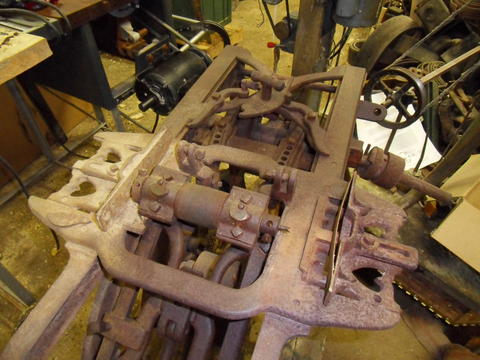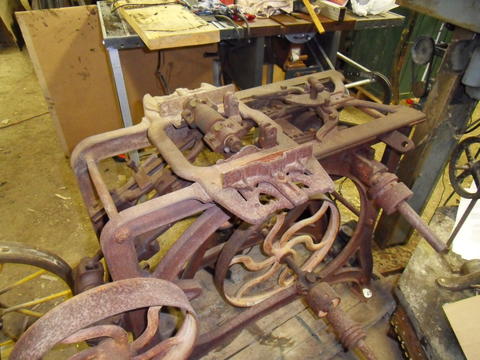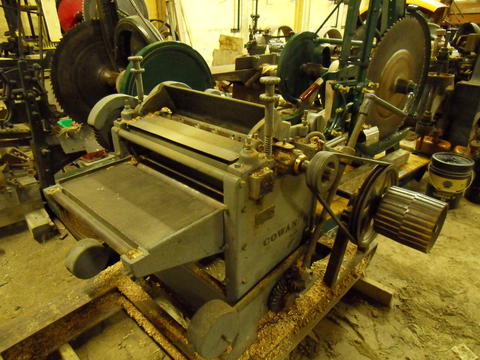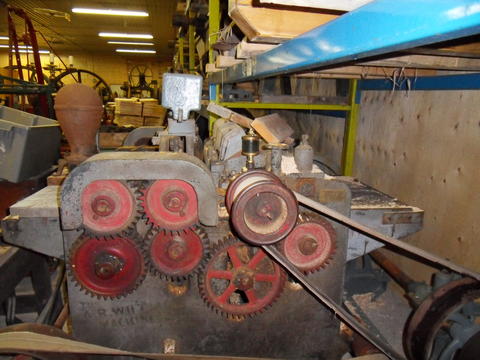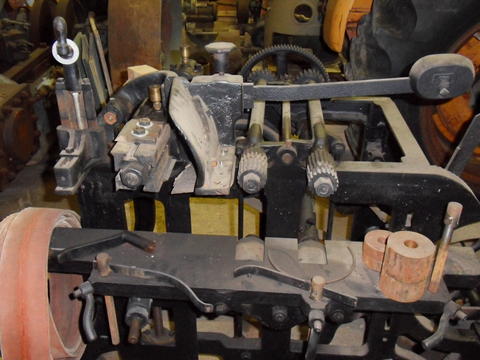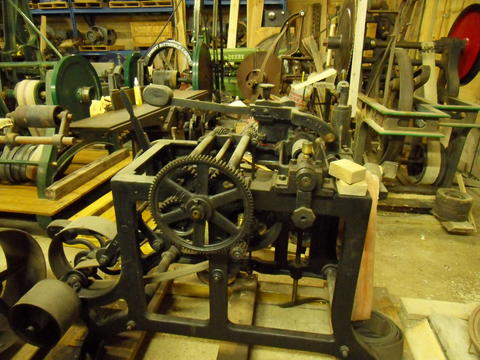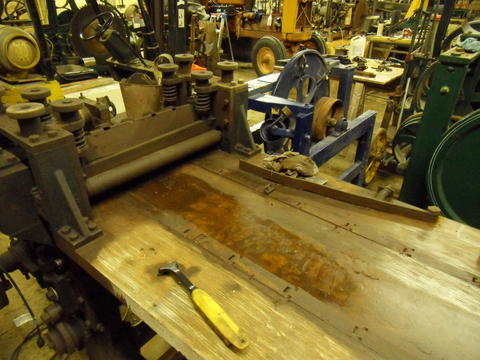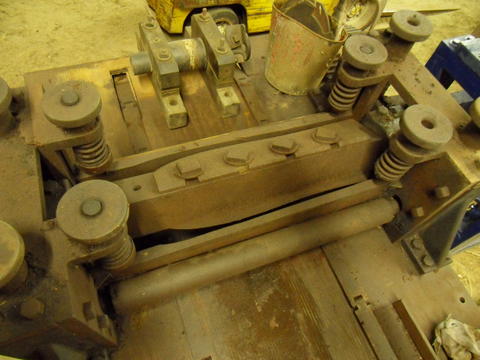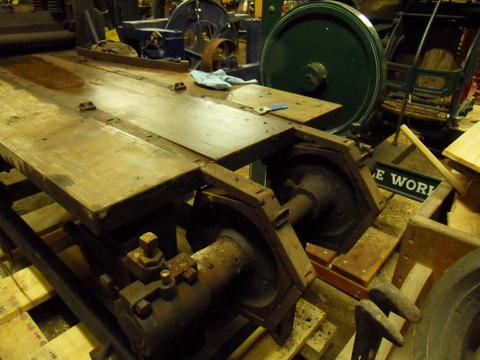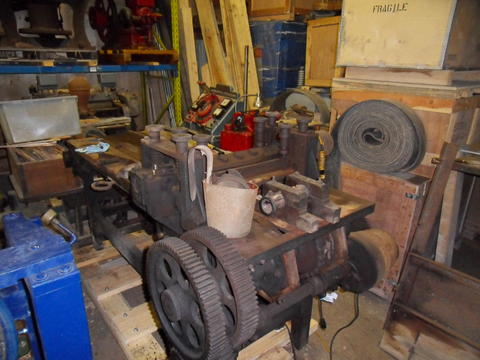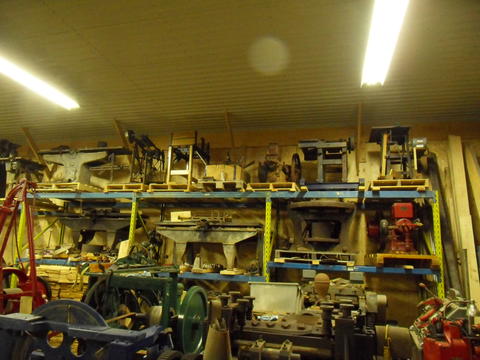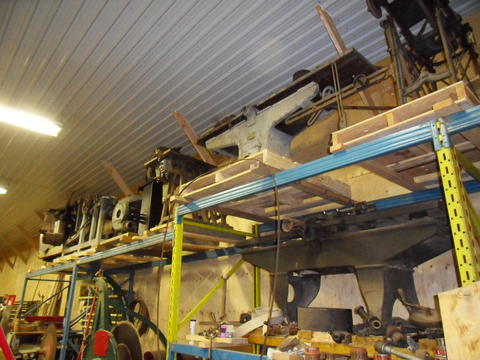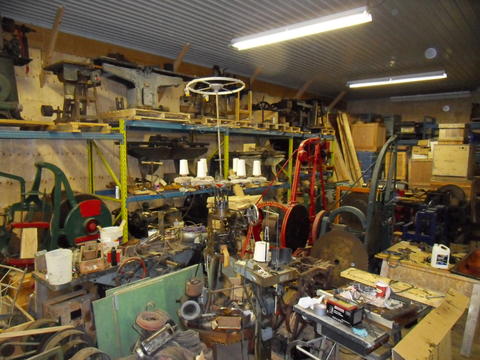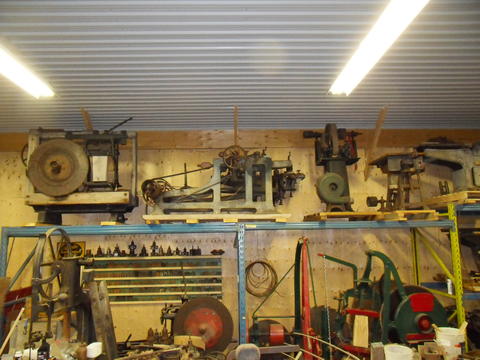Woodworking machines at the Ontario Steam Heritage Museum
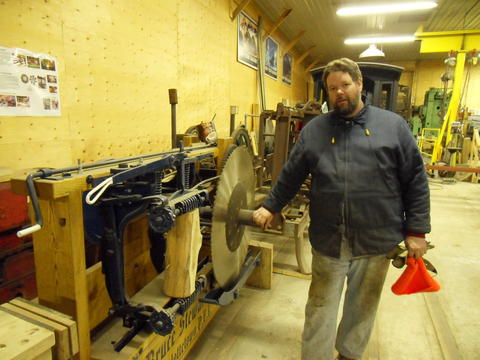 There are a lot of historic woodworking machines at the
Ontario Steam Heritage Museum.
Behind the woodworking machines collection is Richard Mosher,
who is chief engineer at the museum.
There are a lot of historic woodworking machines at the
Ontario Steam Heritage Museum.
Behind the woodworking machines collection is Richard Mosher,
who is chief engineer at the museum.
The woodworking machines aren't really set up for show in the museum,
but I really wanted to see them. Looking at these machines was more of a
"sneaking through the warehouse" sort of adventure.
Much of the equipment is mounted on palettes to make it easier to take to shows.
There are two antique bandsaws in the collection. Ever since I built my own bandsaws,
I have a fascination with all things bandsaw. Although I have
to say, I'm more a user than a collector. Given the opportunity to acquire a bandsaw
like this, I'd probably pass it up.
I'm sure it would take more time to restore and build an enclosure for
one of these than it does to just build one from scratch.
I am, however, in envy of old jointers. This one looked in good shape, almost ready to use. It has
a cylindrical cutter head, not one of those dangerous square heads. There's no provision for
mounting a motor on this one. When they made it, everything was powered by flat belts
off of overhead line shafting.
This machine is what is usually called a "louver groover". Although not in working condition,
it's designed to cut a pair of inclined mortises for inserting the slats
into wooden shutters. The mortise head has a cutter on both ends and moves
on an inclined track. There's a flat belt pulley between the two cutter heads.
Everything, of course, is powered by flat belts, coming from some line shafting somewhere.
Some thickness planers. Again, no motors. These were meant to be powered by overhead line shafting.
A moulding machine of sorts. I'm not quite sure what this one was used for.
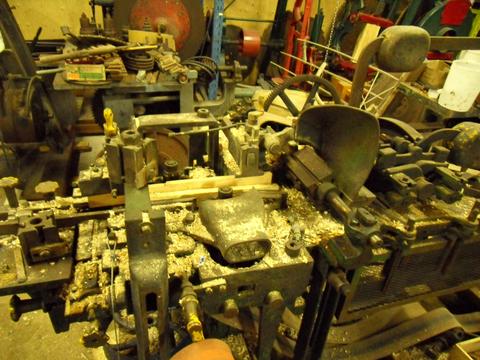
|
This one is a four sided planer. Unfortunately, I didn't get any better pictures of it.
Modern four sided planers all have nice enclosures and lots of dust collection and what not, but
I'm pretty sure that down inside, they work just like this one.
|
I can only speculate what this machine is for. It's clear that it's meant to cut some
pretty hefty molding shape onto the stock. The bed has these tracks with hooks every 2 feet (60 cm)
or so, so it's clear that it's meant to cut fairly short pieces. But I think I just figured
it out. This machine is for cutting seat profiles into chair bottoms. That would mean there
has to be a cam of sorts to move the cutter head up and down as the piece passes. Unfortunately,
I didn't take a picture of the underside of the machine. The whole place is full of puzzles like this.
Two more pictures of this machine below.
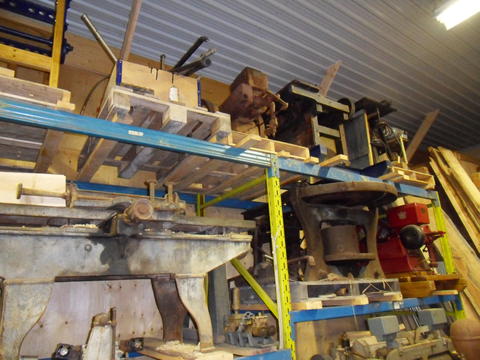
| There was a lot more machinery on shelves. The machines look kind of small and cute in these
photos, but those are rally high ceilings. Most of the machines are on forklift palettes, so that
should give you a sense of scale.
It was tempting to climb the shelves to have a closer look, but then I thought that maybe the shelves
are pretty heavily loaded already, and I imagined getting buried under an avalanche of cast iron.
So I didn't check out any of the machines up there.
|
There are also a lot of shingle mills at the museum.
Richard has about 20 of these. I added a separate page just pictures for the shingle mills.
Back to the Ontario steam museum
See also:
Exploring the old Canbar factory
|
 There are a lot of historic woodworking machines at the
Ontario Steam Heritage Museum.
Behind the woodworking machines collection is Richard Mosher,
who is chief engineer at the museum.
There are a lot of historic woodworking machines at the
Ontario Steam Heritage Museum.
Behind the woodworking machines collection is Richard Mosher,
who is chief engineer at the museum.
